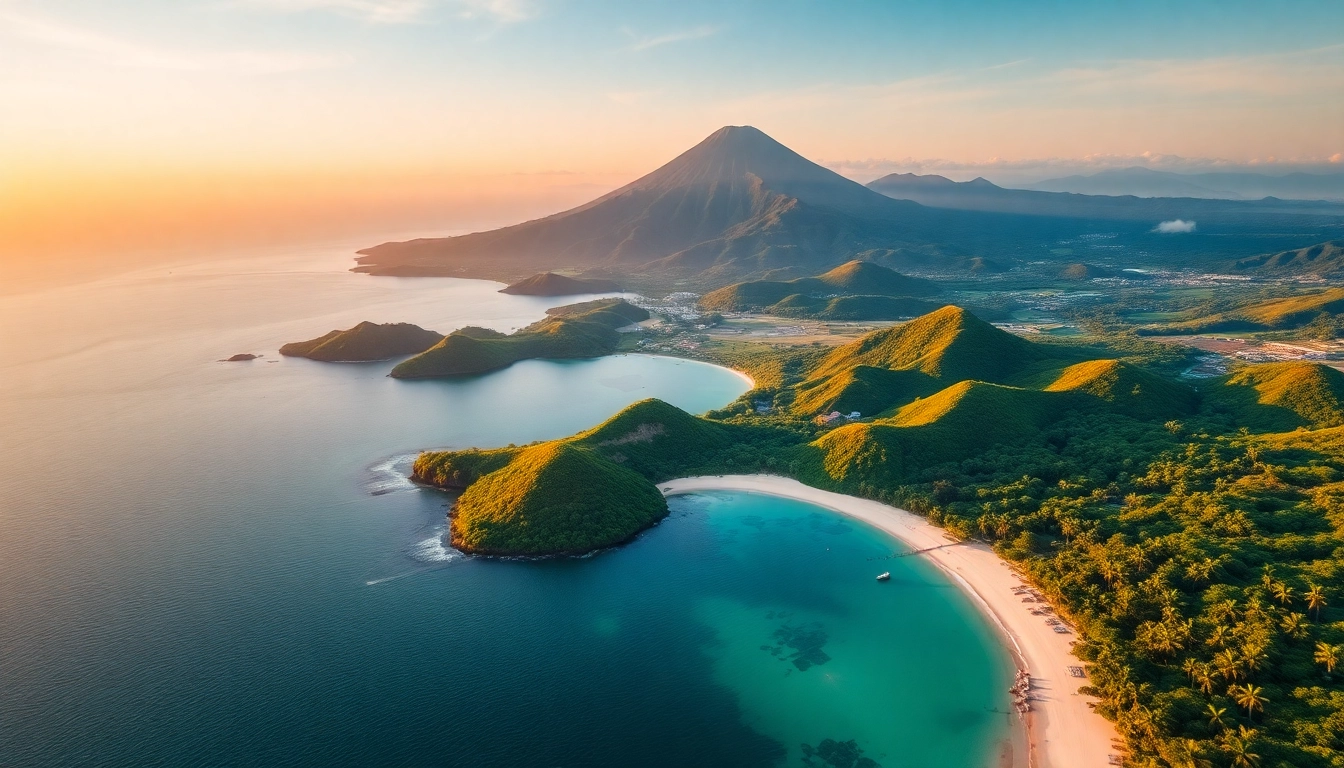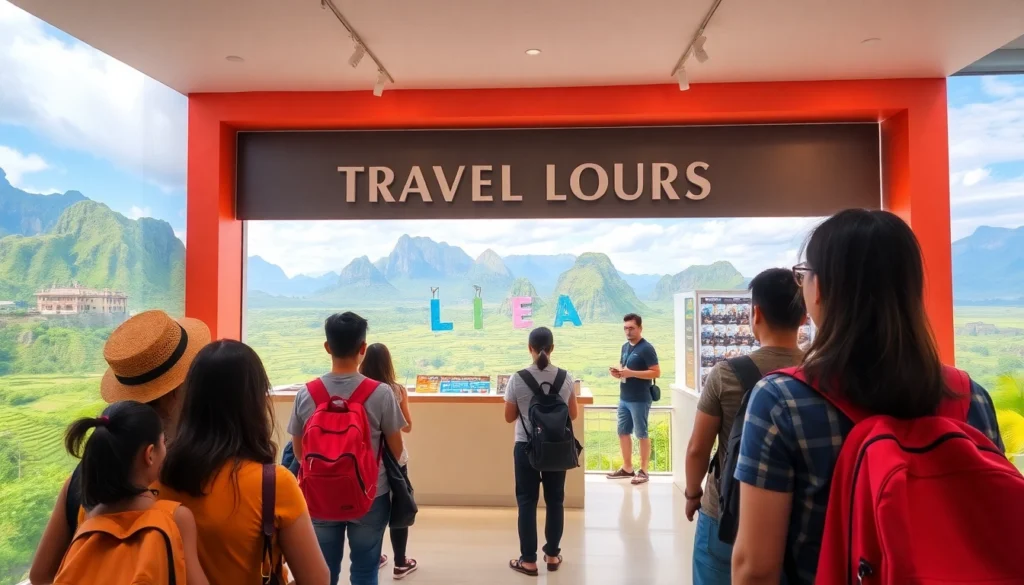Introduction to Lombok: Indonesia’s Hidden Treasure
Indonesia, an archipelago famed for its diverse islands, rich cultural tapestry, and breathtaking natural landscapes, hosts a multitude of destinations that captivate travelers from around the world. Among these, Lombok stands out as a compelling combination of untouched beauty and vibrant local culture. Situated in West Nusa Tenggara province, Lombok is an island that has remained relatively less commercialized than its neighbor Bali, making it a perfect destination for travelers seeking authenticity, adventure, and serenity. Its strategic geographic positioning, varied topography, and a blend of traditional and modern influences create a unique appeal that warrants detailed exploration.
Geographical Location and Key Features
Lombok is part of the Lesser Sunda Islands chain and lies to the east of Bali, separated by the Lombok Strait. Covering approximately 4,725 square kilometers, this island boasts a diverse landscape ranging from pristine beaches and coral reefs to dense jungles and towering volcanic peaks. The island’s southern coast is renowned for its surf-friendly beaches with powder-white sands and clear turquoise waters, making it a magnet for surfers worldwide. In the central region, the majestic Mount Rinjani, Indonesia’s second highest volcano at 3,726 meters, dominates the horizon and offers challenging trekking routes and awe-inspiring crater lakes.
The climate varies from tropical along the coast to cooler mountainous weather at higher elevations, making Lombok a year-round destination. Its precise geographical position also grants access to surrounding islands such as the Gili Islands, which are famous for their vibrant marine life and relaxed island vibe. The strategic location and rich biodiversity make Lombok an exceptional case study in island sustainability and eco-tourism potential.
Historical Background and Cultural Significance
Lombok’s history can be traced back to ancient times, with evidence of early Austronesian settlements dating over a thousand years ago. The island’s culture is predominantly influenced by the Sasak people, who are the indigenous Malay-ethnic group residing mostly in the central and eastern parts of Lombok. Their traditions, language, crafts, and spiritual practices form the backbone of Lombok’s cultural identity.
Historically, Lombok was a hub for spice trading and maritime commerce, which brought various cultural influences from India, Arabia, and later, European colonial powers. The island boasts a rich Islamic culture, evident in its traditional ceremonies, mosques, and architecture. Notably, the indigenous Sasak community maintains their ancestral weaving, pottery, and dance traditions, which are vibrant and integral components of Lombok’s cultural heritage.
Today, efforts to preserve and promote these cultural assets have positioned Lombok as a vital indigenous cultural hub, attracting researchers and cultural tourists alike. Its history is authentically woven into everyday life, making it a living museum of Indonesia’s diverse heritage.
Why Lombok Stands Out Among Indonesian Islands
While Bali often captures global attention for its tourism, Lombok offers a quieter, more authentic experience that appeals to discerning travelers. Its understated charm, combined with natural splendors and cultural depth, sets it apart. Unlike Bali’s densely populated tourist hotspots, Lombok retains its tranquil ambiance, allowing visitors to connect more intimately with nature and local traditions.
Furthermore, Lombok’s less commercialized environment fosters eco-friendly travel. The island’s eco-lodges, community-based tourism initiatives, and sustainable adventure options are gaining momentum, positioning Lombok as a leader in responsible tourism in Indonesia. Its diverse attractions and genuine local hospitality make Lombok a compelling alternative and complement to Bali’s bustling tourism scene.
Top Attractions and Natural Wonders of Lombok
Must-Visit Beaches and Islands
One of the most significant attractions of Lombok is its stunning coastline dotted with pristine beaches and pristine islands. The Gili Islands—Gili Trawangan, Gili Air, and Gili Meno—are world-famous for their crystal-clear waters, vibrant coral reefs, and laid-back ambiance. These islands are ideal for snorkeling, diving, and relaxing away from crowds.
On the main island, beaches like Senggigi Beach, Tanjung Aan, and Selong Belanak cater to a variety of travelers, from water sports enthusiasts to sunbathers. Tanjung Aan’s white sands and turquoise waters are often regarded as some of the most beautiful in Indonesia. The south coast is also well-known for its surfing spots, drawing windsurfing and kite surfing aficionados.
Beyond beaches, Lombok’s offshore islands are pristine, less disturbed, and perfect for exploring marine biodiversity through snorkeling and diving activities. Conservation efforts are underway to protect these ecosystems, ensuring sustainable visitation possibilities.
Mount Rinjani: Indonesia’s Second Highest Volcano
Mount Rinjani is undoubtedly Lombok’s crown jewel, offering a dramatic landscape that combines raw volcanic power with serene crater lakes. The Rinjani Trekking Route is among Indonesia’s most sought-after adventure experiences, attracting mountaineers and nature lovers worldwide.
The trek typically takes 2-4 days, depending on the route and acclimatization needs. It involves challenging ascents, spectacular sunrise views, and visits to the stunning Segara Anak crater lake, which is often shrouded in mist and spectaculaire scenery. The area around Mount Rinjani also offers hot springs and waterfalls, enhancing the experience.
Proper preparation, guided tours, and respecting environmental guidelines are essential for a safe and responsible ascent. The volcano’s activity status is closely monitored, ensuring safety for trekkers while emphasizing the need for eco-responsible tourism practices.
Hidden Waterfalls and Jungle Trekking Trails
Beyond its volcanic peaks and beaches, Lombok hides a lush world of waterfalls and forests. Waterfalls such as Sendang Gile and Tiu Kelep, located in Mount Rinjani National Park, provide breathtaking sights and invigorating swimming experiences.
Jungle trekking through Lombok’s reserves offers opportunities to observe endemic flora and fauna, explore traditional medicinal plants, and learn about local conservation initiatives. Guided eco-tours promote sustainable tourism and ensure visitors experience the natural beauty responsibly.
Many of these trails are accessible with local guides who provide insight into Lombok’s biodiversity, traditional botany, and environmental preservation, making the trek not only adventurous but educational.
Authentic Cultural Experiences & Local Heritage
Traditional Sasak Villages and Crafts
To truly understand Lombok, immersing oneself in the local Sasak culture is essential. Visiting traditional villages like Sade, Rambitan, and Sukarara provides a glimpse into authentic life, where visitors can observe traditional weaving, pottery, and rice farming practices.
Weaving is a prominent craft that features intricate patterns woven from natural fibers. These textiles often have cultural symbolism and are used in ceremonies or sold as souvenirs. These villages also host cultural performances showcasing traditional dance and music, preserving the centuries-old arts of their ancestors.
Engaging with local artisans and participating in hands-on workshops supports community-based tourism and helps sustain cultural practices.
Festivals and Performing Arts
Lombok celebrates a range of festivals rooted in Islamic traditions, agricultural cycles, and ancestral customs. The Bau Nyale Festival, for example, is a unique event where locals hunt for sea worms believed to be the reincarnation of Princess Mandalika, symbolizing renewal and prosperity.
Traditional arts including gamelan music, puppet shows, and ceremonial dances are integral to these festivals. Tourists are encouraged to observe and even partake in these vibrant cultural events, fostering cross-cultural understanding and appreciation.
Many festivals are seasonal, so checking local event calendars in advance ensures an immersive cultural experience during your visit.
Delicious Lombok Cuisine and Culinary Tours
Lombok’s cuisine reflects its cultural diversity, with bold flavors, fresh seafood, and aromatic spices. Signature dishes include Ayam Taliwang (spicy grilled chicken), Plecing Kangkung (water spinach salad with chili), and Sate Bulayak (rice wine served with satay).
Food tours and market visits offer travelers a chance to learn traditional cooking techniques and sample authentic flavors. Street food stalls, warungs, and local restaurants provide both casual and upscale dining options, highlighting the region’s culinary richness.
Participating in cooking classes not only enhances gastronomic appreciation but also supports local food artisans and preserves regional culinary heritage.
Practical Travel Tips for Visiting Lombok
Best Time to Visit and Seasonal Highlights
The ideal time to visit Lombok is during the dry season, typically from May to September, when rainfall is minimal and weather conditions are optimal for outdoor activities. The peak season coincides with July and August, aligning with school holidays and international tourist influxes.
However, shoulder seasons in April and October offer quieter travel experiences with manageable crowds and still favorable weather. Avoid the rainy season from November to March, when heavy rains can disrupt travel plans and hiking conditions.
Getting There: Flights, Ferries, and Transportation
Most travelers arrive in Lombok via Lombok International Airport (Bandara Internasional Lombok), which offers direct flights connecting from Jakarta, Bali, and other major Indonesian hubs. International flights from abroad usually connect through Bali’s Ngurah Rai International Airport, followed by a land or sea transfer.
Ferry services operate between Bali and Lombok, with frequent departures from Padang Bai or Serangan ports in Bali to Bangsal harbor in Lombok. Once on the island, transportation options include rented scooters, private drivers, and local busses, with roads well maintained to support tourism infrastructure.
Organized tours and transfer services can simplify logistics, especially for adventure excursions and remote destinations.
Accommodation Options: From Luxury Resorts to Eco-Lodges
Lombok offers a broad spectrum of accommodation catering to various preferences and budgets. Luxury resorts and boutique hotels in Senggigi, Kuta, and Gili islands provide world-class amenities, spa treatments, and stunning ocean views.
For eco-conscious travelers, eco-lodges and community-run homestays offer authentic experiences embedded in local culture and environmental sustainability. These options often support community initiatives, such as village revitalization and conservation projects.
For backpackers and budget travelers, budget inns and hostels provide comfortable yet affordable accommodations, often located near major tourist sites and beaches.
How to Make the Most of Your Lombok Adventure
Curated Itineraries for Different Travel Styles
Travelers with diverse interests can tailor their Lombok experience through curated itineraries. Adventure seekers might focus on trekking Mount Rinjani, exploring waterfalls, and participating in water sports. Cultural enthusiasts can dedicate days to village visits, festivals, and traditional arts performance.
For leisure travelers, relaxing on beaches or enjoying wellness retreats could be prioritized. Eco-tourists can incorporate visits to conservation projects, wildlife sanctuaries, and sustainable farms into their plans.
Travel agencies and local guides often offer personalized packages, enabling visitors to maximize their time and experiences.
Ensuring Safety and Respecting Local Customs
While Lombok is generally a safe destination, travelers should observe basic safety precautions such as securing belongings, avoiding isolated areas at night, and following safety banners at adventure sites.
Respect for local customs, dress codes, and religious practices is vital. For instance, modest attire is advisable when visiting temples and traditional villages. Engaging with locals politely and learning basic phrases in Bahasa Indonesia can enhance interactions.
Adhering to environmental Guidelines, such as not touching coral reefs or disturbing wildlife, supports conservation efforts and ensures access for future generations of tourists.
Sustainable Tourism and Responsible Travel Tips
Growing awareness around sustainable tourism emphasizes minimizing environmental impact and supporting local communities. Tourists can contribute by choosing eco-friendly accommodations, avoiding single-use plastics, and participating in local conservation initiatives.
Supporting community-run enterprises, buying handmade crafts directly from artisans, and engaging in culturally respectful activities foster positive local relationships and economic benefits.
Practicing responsible travel habits ensures Lombok’s natural beauty and cultural vibrancy are preserved for future visitors.

